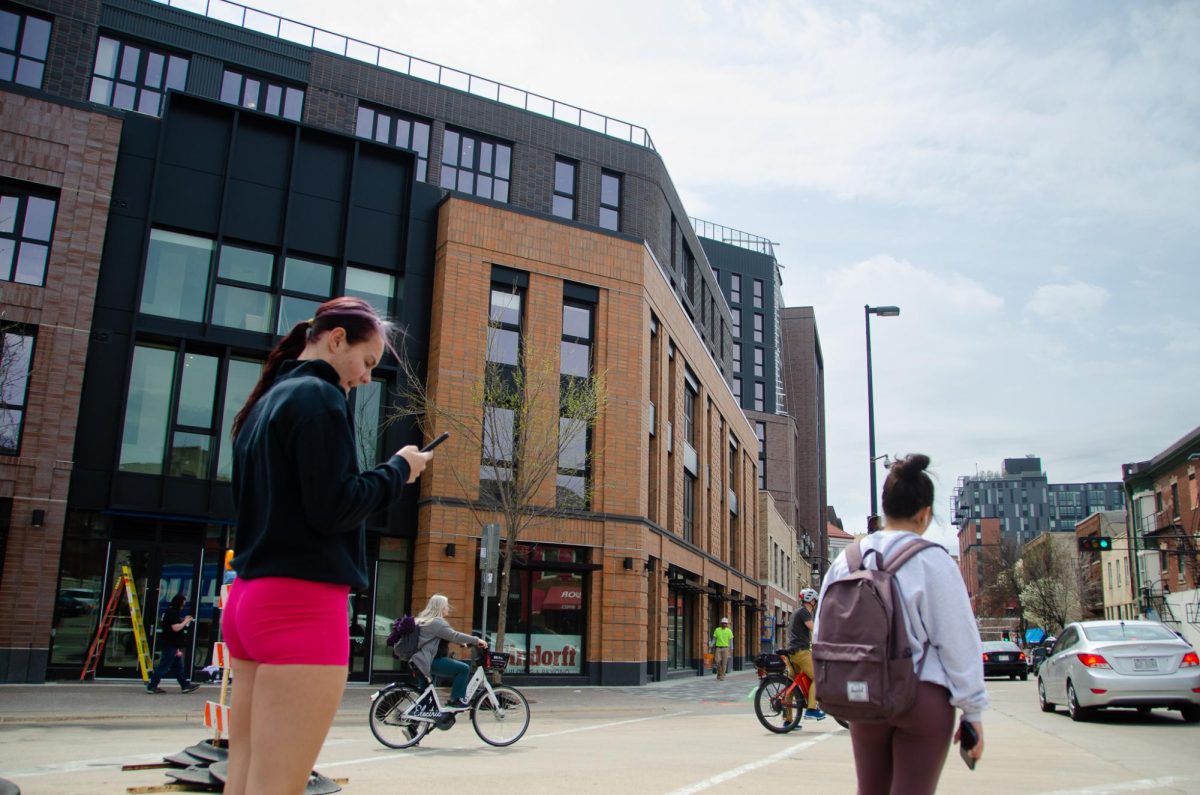Editor’s Note: The correction notice: An earlier version of this article misstated several rent figures for on-campus and off-campus housing. Students who split a room off campus report paying $925 monthly on average for rent and utilities, not $637. Students who split a room on-campus pay, on average $862 per month, not $1,056. Students who live in a private bedroom off-campus report paying an average of $1,008 for rent and utilities, not $1,273.
At the University of Wisconsin, lease agreements and housing plans weigh so heavily on freshmen, that these concerns are a regular part of freshmen introductions, alongside the classic questions of “what’s your major,” and “what dorm do you live in?”
Putting aside the merits of off-campus life, the pressure felt by the UW’s newest and least experienced students to sign a lease is wrong.
There are a few closely related mechanisms behind the freshman fall housing crush — a student culture that prizes off-campus dwelling, perhaps unduly so, an inadequate dorm system, and a housing market that intentionally capitalizes on this culture and the confused freshmen thrown into it.
Over the summer, the city of Madison, in conjunction with UW, undertook a sweeping housing report that included research on both dorms and off-campus housing. A significant portion of the study drew on a student-wide survey, comprised of 4,401 responses. Of the survey’s many noteworthy findings, one is that demand for off-campus housing is influenced by a culture of moving off-campus after freshman year and overcrowding in the dorms.
UW dorms may have a particularly low retention rate partly because they are failing at their most basic mission — to offer convenient affordable housing to students. The operating capacity of the dorms currently exceeds the total residence hall design capacity of 7,724 by over 1,000 beds, according to the report. This has forced UW housing at times to take remedial measures like converting study lounges to bedrooms in Chadbourne Residence Hall and increasing the number of beds in double occupancy rooms to three.
Even despite the culture of moving off-campus, returning to the dorms sophomore year is no guarantee. In the 2024-2025 academic year 24% of students chose to apply for on-campus housing for their second year, according to the report. Of those students, only 74% were offered a spot, according to the report.
Not only do students often find themselves living in overcrowded dorms, but they pay quite a lot to do so. Students who split a room off-campus report paying an average of $925 per month for rent and utilities as opposed to a monthly average of $862 in double occupancy rooms on campus, according to the report. Students who have a private bedroom off-campus report paying, on average, $1,008 for rent and utilities, according to the report.
UW’s student population has increased by 6,780 students since fall 2019, according to the fall 2019 and fall 2024 enrollment reports. In that same period, the only significant changes to student housing have been the addition of a resident floor to the top of Sellery Residence Hall and the destruction of the Zoe Bayliss Student Housing Cooperative, which was subsequently relocated off-campus with the help of Madison Community Cooperative.
This is not the fault of the those who run the dorms, but the fault of the university for enrolling more students than the dorms can handle, leaving the private market to absorb the rest.
The vast majority of freshmen, who, at best, have a cursory understanding of the housing market, are thrust headfirst into the housing race in their first weeks on campus. UW exists on an unfortunate list of universities where the term “Fall Rush” doesn’t just apply to Greek Life, but to the housing market too. Of the many problems with this system, one is that freshmen often end up on the losing end of lease agreements.
Last fall, when I was a freshmen my “wisc.edu” email accounts swiftly came under barrage from a number of new, overpriced Madison apartment complexes — Chapter, Oliv and Atmosphere. One day early on in the semester, I came back to my dorm to find flyers for an apartment building sitting outside the doors of everyone on the floor. Also, many marketing strategies only add to the confusing and gimmicky nature of the student housing market.
So where does this leave today’s freshmen? Unfortunately, the dorms do not offer the kind savings that you would expect when compared to many of the older off-campus places available to students. The dorms do offer a quintessential part of the college experience and students would be remiss not to take part. Two years in the dorms might even be the way to go considering their social advantages, location and affordability.
Freshmen would do well to take the time and learn what they can about Madison’s housing market before rushing into over-priced lease agreements with large complexes that can afford to aggressively advertise. The real answer here, though, is that UW leadership needs to think about how years of over-enrolling is taking a toll on almost every aspect of student and city life — or at least allow some time for dorm space to increase before admitting another historically large class.



